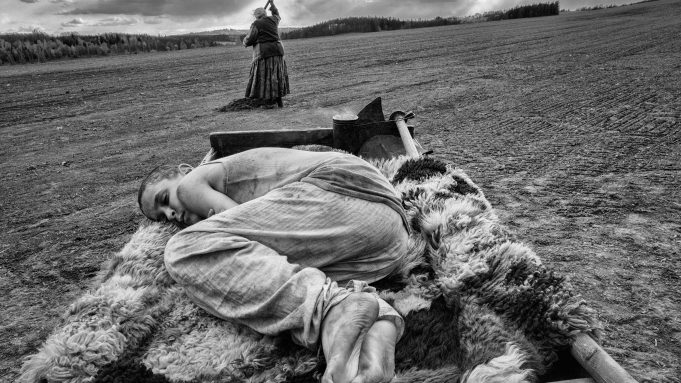
Candide, or absolute nihilism?
Eastern European cinema has always had a nail-biting bleakness about it, but The Painted Bird may have just upended all others. This is a brutal hellscape somehow stretched into an adventure epic; as hard to look away from, as it is to watch in the first place.
There’s little wonder as to why Václav Marhoul’s war-ravaged horrors, based on Jerzy Kosinski’s classic novel, played at the 55th Chicago International Film Festival earlier this year. the North American filmic institution is renowned for giving second-wind to all the festival-favourites that have made great impact in months prior, and The Painted Bird falls well within that criteria.
It’s the type of long-winded piece that’d get (and got) standing ovations by the brave audience members who’ve put themselves through such a stern and punishing visual onslaught – the ones who’ve remained after so many others have walked out of the cinema in disgust (or in tears). I realise I’m not painting the film with quite the allure it rightfully deserves, but before anyone watches they should know that they are in for a challenge.
Strip away some of the abhorrent ideas and relentless pain and you’re left with some of the most beautiful cinematography put to black-and-white in years. It’s patient, unflinching and forceful with cinematographer Vladimir Smutny doing his utmost best to really pull on the malicious threads of unkind caretakers, sexual depravity and deportation that transform innocence and discard humanity.
That innocence is imbued by the film’s vessel, an unnamed Jewish orphan played with wide-eyed brilliance by Petr Kotlar. Silence abounds while he’s thrust between misadventures – distinguished by chapters – facing the nightmarish results of the second world war and what it has done to near-abandoned villages, ravenous townsfolk, accused witches, and religious hermits. The only sound he makes throughout are the cries of pain at night, during one of the film’s most controversial acts involving Julian Sands as a paedophile parishioner (thankfully, this is one of the few atrocities kept implicit).
The Painted Bird was shot over many years using Kotlar as the sole actor, teasing an organic evolution that’s meaningful and substantive as the boy is shaped by his experiences and set by the learned ills of lust, envy and greed. Because of the film’s extraordinary length and aggressive storytelling, the boy’s psychosexual development is visceral and beautifully contextualised, tracking how a blank slate can be corrupted so easily in the desolate post-war countryside.
Though evil and full of hate, the poetry Marhoul has brought to Kosinski’s story is elegant and empathetic. That appeal wouldn’t exist without Smutny though who, as stated above, does an incredible job propelling the story and playing with scale as the boy traverses distinct landscapes from thick forests to abundant water meadows. Crows are turned into monsters, puritanical townsfolk swarm like viscous beasts, and violent soldiers are given sympathetic hero turns. Wide angles are common, scanning an area with curiosity only to find that its as filled with rotten people as the last one.
The story plays with the audience in the most punishing of ways, expecting that a small glimmer of hope can act as a glass of water after days stuck in the desert. Marhoul’s minimal opening for optimism feels like an insult, with closure coming too late after three hours of searing devastation. There’s overwhelming technical beauty amidst all the chaos, and the landscapes have a bucolic charm despite those that inhabit them, but aside from a deep examination of how a child absorbs such terrible experiences, there’s really very little in the way of emotional pay-off for all that pain.
![]()
![]()
![]()
![]()
![]()
FOUR STARS (OUT OF FIVE)
The Painted Bird screened as part of the 55th annual Chicago International Film Festival. It does not yet have a release date in Australia.
